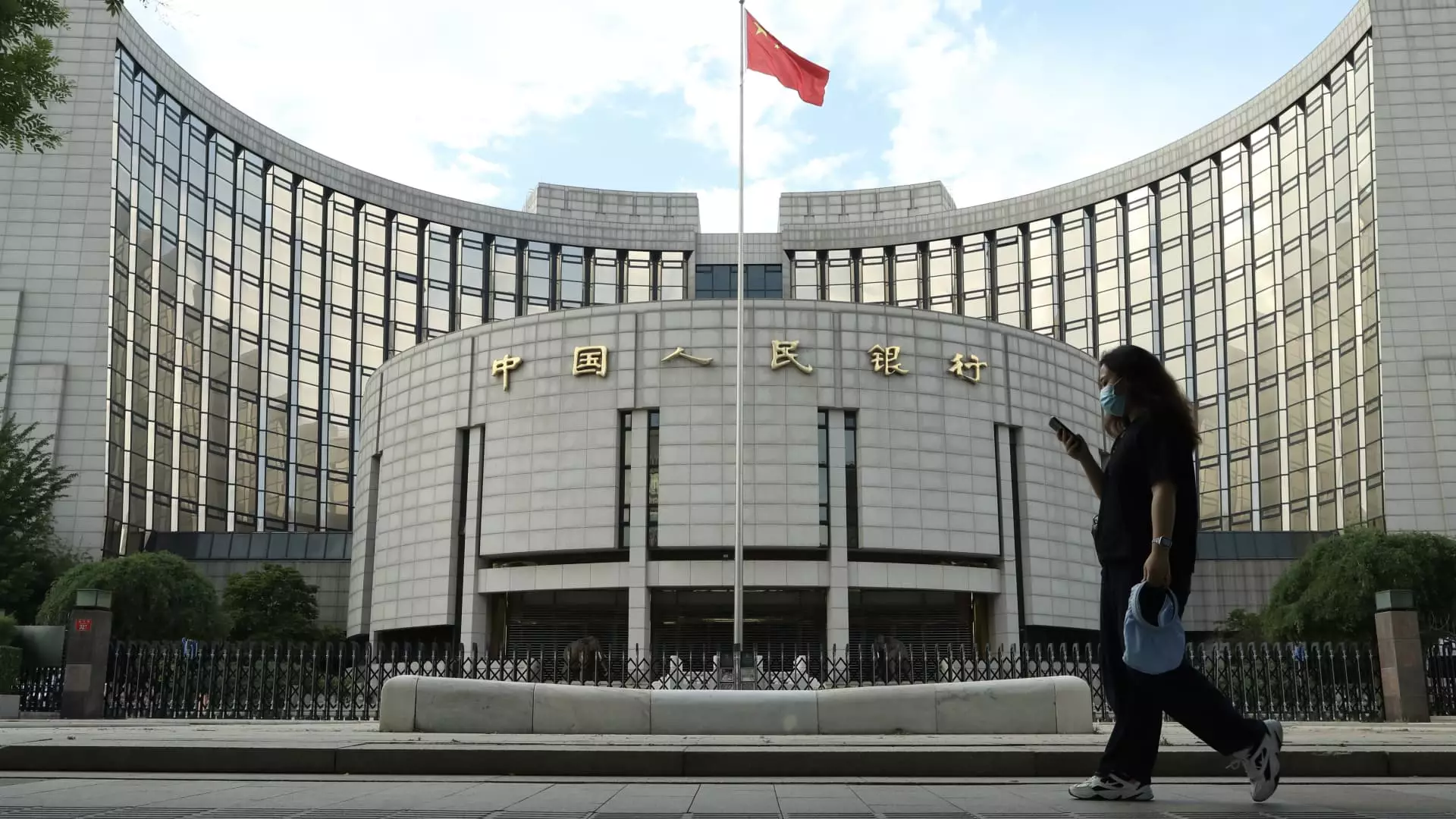On Monday, the People’s Bank of China (PBOC) made a significant move by lowering its primary lending rates. This decision came as no surprise to economists and analysts, given the growing pressures faced by the Chinese economy. The one-year loan prime rate (LPR) has been reduced to 3.1%, while the five-year LPR has dropped to 3.6%. These rates serve crucial functions in shaping corporate borrowing costs and household mortgage rates, respectively. This recent adjustment underscores the ongoing challenges within China’s economic landscape, characterized by stagnating growth and fragile consumer confidence.
Governor Pan Gongsheng’s indications during a forum prior to the rate cut suggested that such moves were imminent. He further elaborated on potential adjustments to the reserve requirement ratio (RRR), hinting at possible cuts between 25 to 50 basis points by year’s end. This proactivity from the PBOC signals the urgency with which authorities are attempting to navigate the current economic headwinds, which include a sluggish property market and weakened consumer demand.
While the reduction in lending rates is aimed at making borrowing cheaper and fostering economic activity, analysts are divided regarding its potential effectiveness. Shane Oliver, AMP’s head of investment strategy, acknowledged the necessity of the rate cuts but posited that monetary stimulus alone may not suffice. He emphasized that the deeper issue lies in China’s lack of demand rather than merely the cost of borrowing.
This sentiment is echoed by Zhiwei Zhang from Pinpoint Asset Management, who cautioned that despite the rates being lowered, the real interest rates are still considerably high. His perspective suggests that further reductions may be necessary, particularly as global economic conditions evolve and the Federal Reserve adjusts its own rates. This interconnectedness highlights the complexities of China’s economic strategies in the backdrop of external influences.
The challenges that China faces are multifaceted. The ongoing property crisis has left many sectors in disarray, leading to a ripple effect on consumer sentiment and confidence. The property sector, which has traditionally been a robust growth engine, is now a source of instability. As evidenced by the gradations in GDP growth and indicators such as retail sales and industrial production, even slight improvements may not be enough to stem the tide of uncertainty.
To mitigate these pressures, fiscal stimulus measures are increasingly being called for by experts. These measures would aim to provide more direct support to struggling sectors and consumers rather than relying solely on cheaper borrowing costs. The question is whether the government will take bold steps in this direction, especially as it assesses the success of previous stimulus efforts.
Looking ahead, the trajectory of China’s economic recovery remains uncertain. Despite a slightly better-than-expected GDP growth of 4.6% year-on-year for the third quarter, the underlying issues remain significant. The coarse economic landscape could affect decisions regarding further rate cuts and changes to the RRR.
Market participants will keenly observe the PBOC’s next moves as they attempt to calibrate their policies effectively in response to both domestic and international economic pressures. The combination of monetary measures and potential fiscal intervention will be vital in addressing the fundamental challenges of demand and growth.
While the recent lending rate cuts reflect a necessary response to economic pressures, they also open up a broader conversation about the state of China’s economy. The effectiveness of such measures will ultimately depend on their ability to inspire consumer confidence and stimulate demand, allowing China’s economic engine to recover in a sustainable manner. As the global economy evolves, the positioning of China within this narrative will remain a keen point of observation for economists and investors alike.


Leave a Reply